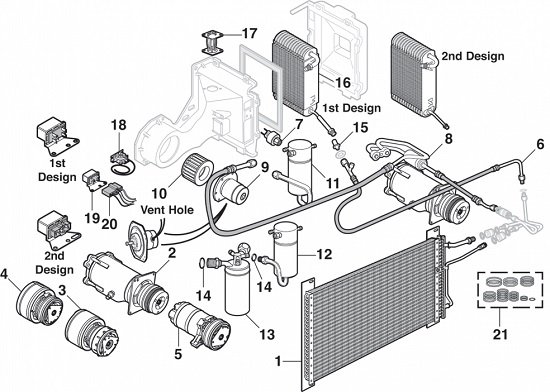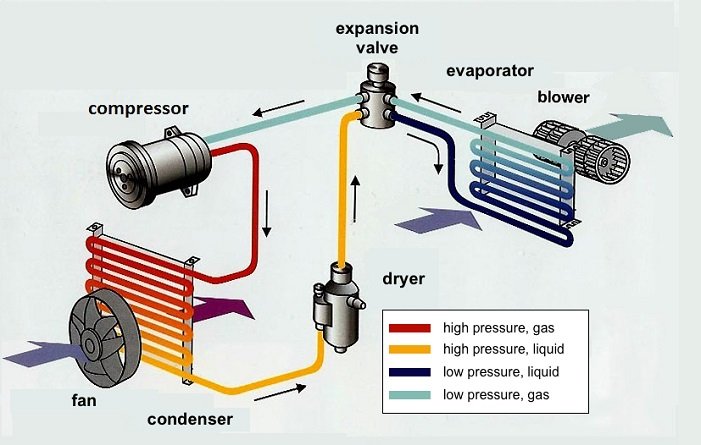Maintaining a comfortable ride is paramount, especially during sweltering summers. If your trusty 73-87 Chevy truck’s air conditioning has decided to take a break, fear not!
This comprehensive guide will equip you with the knowledge to diagnose and resolve the issue, along with detailed diagrams to streamline the process.
Anatomy of Chevy Truck Air Conditioning
Before diving into troubleshooting, understanding the components of your Chevy truck’s air conditioning system is essential. Here’s a breakdown of the key players:

-
Compressor: The heart of the system, responsible for compressing refrigerant gas into a high-pressure liquid.
-
Condenser: Located in front of the radiator, the condenser converts the high-pressure liquid refrigerant into a high-pressure gas.
-
Drier: Acts as a filter, removing moisture and impurities from the refrigerant gas.
-
Expansion valve: Regulates the flow of refrigerant into the evaporator, controlling the cooling effect.
-
Evaporator: Situated inside the cabin, the evaporator absorbs heat from the air, transforming the refrigerant gas into a low-pressure liquid.
-
Blower motor: Circulates air across the evaporator, distributing cool air throughout the cabin.
Diagnosing Air Conditioning Problems

-
Inspect the Condenser: Check for any visible damage or debris that could be obstructing airflow.
-
Verify Compressor Operation: Engage the air conditioning and listen for the compressor engaging. If it doesn’t, check for blown fuses or electrical issues.
-
Evaluate Refrigerant Levels: Use a refrigerant gauge to determine if the system is adequately charged. Low refrigerant levels can significantly affect cooling performance.
-
Assess the Expansion Valve: If the refrigerant level is satisfactory, the expansion valve might be malfunctioning. A faulty expansion valve can disrupt the refrigerant flow, hindering cooling.
-
Check the Blower Motor: Ensure the blower motor is functioning correctly. A malfunctioning blower motor can prevent proper air circulation, even if the cooling system is working effectively.
The Final Touch
Once the problem has been identified, you can proceed with the necessary repairs or replacements. Whether it’s replacing a faulty component, recharging the refrigerant, or addressing electrical issues, having a clear understanding of the system will empower you to tackle the task effectively.
Remember, regular maintenance is key to maintaining a healthy air conditioning system in your 73-87 Chevy truck. Preventive measures, such as checking refrigerant levels, inspecting components for wear and tear, and addressing minor issues promptly, can keep your truck’s air conditioning system running smoothly for years to come.
With this comprehensive guide, you’re well on your way to becoming a Chevy truck air conditioning expert. So, roll up your sleeves, grab your tools, and embark on a journey to restore your classic truck’s cooling comfort. Your Chevy will thank you for it!

